
Quantum Mechanics of Relationship Scams – A Metaphor
A Metaphor – Quantum Mechanics and the Recovery of Traumatized Scam Victims: A Dance of Uncertainty and Entanglement
Primary Category: Scam Victim Recovery Philosophy
Author:
• Tim McGuinness, Ph.D., DFin, MCPO, MAnth – Anthropologist, Scientist, Polymath, Director of the Society of Citizens Against Relationship Scams Inc.
Author Biographies Below
About This Article
The metaphorical framework that applies concepts from quantum mechanics to the recovery of traumatized scam victims presents a unique perspective that can be useful to understand these events better. It explains how metaphors help people grasp complex, emotional experiences and shows their long history as teaching tools. Superposition and Schrödinger’s cat illustrate the uncertain period before discovery, while the act of revelation collapses uncertainty into painful clarity. Quantum entanglement is used to describe lingering psychological ties to perpetrators. The uncertainty principle reflects the difficulty of pinning down motives and facts, and wave-particle duality captures how the experience shifts in meaning over time. The piece encourages crafting personal metaphors to aid healing and describes recovery as a series of non-linear shifts akin to quantum leaps, supported by education and community resources.
Note: This article is intended for informational purposes and does not replace professional medical advice. If you are experiencing distress, please consult a qualified mental health professional.

A Metaphor – Quantum Mechanics and the Recovery of Traumatized Scam Victims: A Dance of Uncertainty and Entanglement
What the heck does Quantum Mechanics and Scam Victims Recovery have to do with each other?
Read on and you will discover!
The Power of Metaphors: Bridging the Gap Between Complexity and Comprehension
Metaphors and analogies have long been recognized as powerful tools for understanding complex ideas, especially those ideas laden with significant emotions or trauma. They serve as bridges, connecting abstract concepts to familiar experiences and providing a framework through which we can explore and make sense of the seemingly incomprehensible. In the context of scam victims’ recovery, metaphors offer a unique and profound way to navigate the labyrinth of emotions, betrayal, and healing.
The Cognitive and Emotional Benefits of Metaphorical Thinking
Metaphors tap into our innate ability to understand one thing in terms of another, leveraging our existing knowledge and experiences to illuminate new and complex ideas. This cognitive process, known as conceptual metaphor theory, suggests that we understand abstract concepts by mapping them onto more concrete, familiar domains. For instance, understanding love as a journey allows us to apply our knowledge of travel and navigation to the complexities of romantic relationships.
For scam victims, metaphors provide a way to externalize and objectify their experiences, making them more tangible and manageable. The quantum mechanics analogy, for example, transforms the chaotic and confusing experience of discovery and betrayal into a structured, scientific framework. This shift can be profoundly liberating, offering a sense of order and predictability in the midst of emotional turmoil. It also helps to overcome emotional connections that would otherwise get in the way of understanding.
Additionally, metaphors have a unique ability to evoke emotions and create resonance. They can capture the essence of an experience in a way that mere description cannot, tapping into the subconscious and emotional layers of understanding. This emotional resonance is particularly important for scam victims, as it allows them to connect with their experiences on a deeper level, acknowledging the pain and trauma without being overwhelmed by it.
A Teaching Tool Used for Thousands of Years
Metaphors have been a cornerstone of storytelling and teaching for thousands of years, serving as powerful tools to convey complex ideas and moral lessons in accessible and memorable ways. One of the most renowned examples of this is Aesop’s Fables, a collection of stories attributed to the ancient Greek storyteller Aesop, who lived around the 6th century BCE (BC). These fables, which feature animals as central characters, use metaphor and allegory to explore human nature, virtues, and vices, making them relatable and easy to understand for audiences of all ages.
In Aesop’s Fables, metaphors are employed to represent abstract concepts through concrete and often anthropomorphized animals. For instance, “The Tortoise and the Hare” (which, by the way, is a perfect metaphor for scam survivors) uses the slow and steady tortoise and the swift but overconfident hare to illustrate the moral that “slow and steady wins the race.” This metaphor allows readers to grasp the importance of perseverance and humility without directly lecturing them. Similarly, “The Fox and the Grapes” introduces the concept of cognitive dissonance through the fox who, unable to reach a cluster of grapes, decides they are probably sour anyway. This metaphor teaches about the human tendency to devalue things that are difficult or unattainable, a psychological phenomenon that resonates with readers across cultures and time periods. By using these animal characters and their actions as metaphors for human behavior, Aesop’s Fables have endured as timeless lessons, teaching generations about the nuances of human nature and the consequences of one’s actions.
Metaphors as Healing Tools
Metaphors are not merely intellectual exercises; they are powerful healing tools that can facilitate emotional processing and recovery. By providing a new lens through which to view their experiences, metaphors can help scam victims reframe their narratives, shifting from victimhood to empowerment and growth.
The quantum entanglement metaphor, for example, acknowledges the persistent and often painful connection that victims feel with their perpetrators. By understanding this entanglement as a natural and inevitable part of their experience, victims can begin to accept it without judgment. This acceptance is a crucial step in the healing process, allowing victims to move from a place of resistance and denial to one of acknowledgment and integration.
Furthermore, metaphors can inspire hope and resilience by highlighting the dynamic and evolving nature of the recovery journey. The wave-particle duality metaphor, for instance, suggests that the scam experience is not fixed but fluid, capable of taking on different forms and meanings over time. This fluidity can be both comforting and empowering, reminding victims that they are not defined by their past but are continually shaping their future.
The Universal Language of Metaphors
One of the most remarkable aspects of metaphors is their universality. They transcend cultural and linguistic barriers, tapping into shared human experiences and emotions. This universality makes metaphors particularly effective in helping scam victims from diverse backgrounds find common ground and shared understanding.
The quantum mechanics analogy, for example, draws on a body of knowledge that is recognized and respected globally. It provides a common language through which victims can discuss their experiences, compare notes, and offer support to one another. This shared language can be a source of comfort and validation, reminding victims that they are not alone in their journey and that their experiences, while unique, are part of a larger human narrative.
Crafting Personal Metaphors for Healing
While established metaphors and analogies offer valuable insights, there is also power in crafting personal metaphors that resonate with an individual’s unique experience. Encouraging scam victims to create their own metaphors can be a therapeutic exercise, allowing them to explore their emotions, make connections, and find meaning in their journey.
For some, the scam experience might be likened to a storm, with the discovery of the scam as the eye of the storm, a moment of clarity and calm amidst the chaos. For others, it might be a journey through a dark forest, with the path to recovery marked by twists, turns, and unexpected discoveries. Whatever the metaphor, the act of creating it is a powerful tool for self-reflection and healing.
Remember
Metaphors and analogies are more than just literary devices; they are essential tools for understanding and healing, especially when emotions are running high. They provide a framework through which we can explore complex ideas, connect with our emotions, and find meaning in our experiences. For scam victims or survivors, metaphors offer a unique and profound way to navigate the complexities of betrayal, recovery, and resilience.
By embracing the power of metaphorical thinking, victims/survivors can gain a new perspective on their journey, one that acknowledges the complexity and uncertainty of their experience while also celebrating their strength and growth. Whether through established analogies like quantum mechanics or personal metaphors crafted from their unique experiences, scam victims can find solace, understanding, and a path forward in the transformative power of metaphors.
Quantum Mechanics & Recovery Metaphor
In quantum mechanics, particles exist in a state of superposition, where they can be in multiple states simultaneously until observed. This phenomenon, famously illustrated by Schrödinger’s cat, offers a profound metaphor for the experience of scam victims before the revelation of the scam. Just as the cat is both alive and dead until the box is opened, scam victims often exist in a state of uncertainty, where the relationship could be genuine or a deceitful ploy. The act of discovery, much like the act of observation in quantum mechanics, collapses this superposition into a definite state, revealing the harsh truth of the scam.
Schrödinger’s Cat and the Moment of Revelation
Schrödinger’s cat, a thought experiment devised by physicist Erwin Schrödinger, presents a paradox that encapsulates the essence of quantum uncertainty. In this experiment, a cat is placed in a sealed box with a radioactive atom that has a 50% chance of decaying and triggering a poison that would kill the cat. Until the box is opened and the cat is observed, the cat is simultaneously alive and dead. This paradox illustrates the strange and counterintuitive nature of quantum mechanics, where particles can exist in multiple states at once. See more below about Schrödinger’s cat.
For scam victims, this analogy resonates deeply. Before the scam is discovered, victims often experience a similar state of uncertainty. They may have doubts, suspicions, or even moments of clarity, but these are overshadowed by hope and the desire to believe in the authenticity of the relationship. The scammer, much like the radioactive atom, holds the power to either fulfill or shatter the victim’s hopes. It is only in the moment of revelation, when the “box is opened” and the scam is exposed, that the superposition collapses, and the victim is confronted with the harsh reality.
This moment of revelation is often described as a quantum leap, a sudden and dramatic shift from one state to another, a profound shift in perception. For scam victims, this leap is from a state of trust and vulnerability to one of betrayal and disillusionment. The emotional and psychological impact of this revelation can be profound, leaving victims feeling as though they have been abruptly thrust into an alternate reality where nothing is as it seemed. Their reaction provides the onset for trauma.
Quantum Entanglement and the Persistent Connection
Quantum entanglement, a phenomenon where particles (bodies) become interconnected in such a way that the state of one instantly influences the state of another, regardless of distance, offers another compelling metaphor for the scam victim’s experience. After the scam is revealed, victims often find themselves entangled with their perpetrators (the criminals, the scammers) in a way that is difficult to sever. This entanglement is not physical but psychological and emotional, a lingering connection that persists even after the scam has ended.
This entanglement manifests in various ways. Victims may find themselves compulsively checking for updates on the scammer, seeking closure or vindication. They may experience intrusive thoughts or flashbacks, reliving the moments of the scam and the emotions that accompanied them. This persistent connection can be as frustrating as it is painful, a reminder of the betrayal that feels inescapable.
In quantum physics, entanglement is a fundamental aspect of the universe, a force that binds things (particles) together in a way that defies classical understanding. For scam victims, this entanglement is a reminder of the complex and often inexplicable nature of human relationships and the lasting impact of betrayal. Just as entangled particles remain connected across vast distances, the emotional and psychological bonds formed during the scam can feel impossible to break, even when the physical connection has been severed.
Heisenberg’s Uncertainty Principle and the Elusiveness of Truth
Heisenberg’s Uncertainty Principle, which states that it is impossible to simultaneously know the exact position and momentum of a particle, provides yet another layer to the quantum metaphor for scam victims. This principle suggests that the act of measurement itself alters the system being observed, introducing an inherent uncertainty into any attempt to understand it fully.
For scam victims, this principle resonates in the elusiveness of the truth. As they seek to understand what happened and why, they often find that the more they try to pin down the facts, the more they seem to slip away. The scammer’s motives, the extent of the deception, and the true nature of the relationship can all feel like moving targets, impossible to grasp fully. This uncertainty can be profoundly disorienting, leaving victims feeling as though they are navigating a world where the rules of cause and effect no longer apply. This is called Cognitive Dissonance.
The act of seeking answers and closure can itself alter the victim’s perception of the scam. As they delve deeper into the details, they may uncover new layers of deception or realize that their initial assumptions were incorrect. This process of discovery and rediscovery can be both enlightening and exhausting, a constant reminder of the complexity and uncertainty that underlies their experience.
Wave-Particle Duality and the Dual Nature of the Scam Experience
Wave-particle duality, the concept that particles can exhibit both wave-like and particle-like properties depending on how they are observed, offers a final layer to the quantum metaphor for scam victims. This duality suggests that reality is not fixed but fluid, capable of taking on different forms depending on the context and the observer.
For scam victims, this duality is evident in the shifting nature of their experience. The scam can feel like a wave, an overwhelming force that sweeps them up and carries them along, or it can feel like a particle, a discrete event with clear boundaries and consequences. It felt like a loving relationship, but when observed another way, it became a deception and a scam. This dual nature can make it difficult for victims to make sense of what happened, as they struggle to reconcile the contradictory aspects of their experience.
The act of observing and reflecting on the scam can itself alter its nature, as trauma changes their memories. As victims process their experiences and seek to understand them, they may find that their perceptions shift, and new insights emerge. This fluidity can be both liberating and confusing, a reminder that the truth of their experience is not fixed but evolving, much like the particles in a quantum system.
The Quantum Leap to Recovery
Just as quantum mechanics challenges our classical understanding of reality, the experience of scam victims challenges our notions of trust, vulnerability, and human connection. By embracing the quantum metaphors of uncertainty, entanglement, and duality, survivors can gain a new perspective on their journey and the complex emotions that accompany it.
The path to recovery, much like a quantum leap, is not a linear process but a series of shifts and transformations. Survivors must learn to navigate the uncertainty of their experience, acknowledging that there may be no single, definitive truth but rather a tapestry of possibilities and interpretations. They must also work to disentangle themselves from the persistent connection to their perpetrators, recognizing that this entanglement, while powerful, is not insurmountable. The SCARS Institute’s free Scam Survivor’s School is especially helpful in making sense of all this.
Remember that victims can find solace in the knowledge that their experience, like a quantum system, is fluid and evolving. They can choose to focus on the wave-like aspects of their journey, embracing the ebb and flow of emotions and insights, or they can seek to understand the particle-like aspects, identifying the discrete events and crises, and lessons that have shaped their path. By doing so, they can begin to rewrite their narrative, one that acknowledges the complexity and uncertainty of their experience while also celebrating their resilience and growth.
In the end, the quantum metaphors offer scam victims a unique lens through which to view their journey. They remind us that reality is not always what it seems, that connections can persist even when they are no longer physical, and that truth is often elusive and multifaceted. By embracing these metaphors, victims can find a new sense of direction and purpose, a quantum leap towards healing and renewal.
Conclusion
The exploration of quantum mechanics and its parallels with the scam victim’s journey offers a unique and profound perspective on the complexities of betrayal, healing, and resilience. Just as quantum particles exist in a state of superposition until observed, scam victims often find themselves in a liminal space of uncertainty, where the authenticity of their experiences is both real and illusory. The revelation of the scam, much like the act of observation in quantum mechanics, collapses this superposition, forcing victims to confront the harsh reality of their situation.
Furthermore, the concept of quantum entanglement resonates deeply with the persistent connection that victims feel with their perpetrators, a bond that defies physical separation and lingers in the mind long after the scam has ended. This entanglement is a reminder of the complex and often inexplicable nature of human relationships and the lasting impact of betrayal.
By embracing these quantum metaphors, scam victims can gain a new lens through which to view their journey, one that acknowledges the complexity and uncertainty of their experience while also celebrating their strength and growth. The path to recovery, like a quantum leap, is not a linear process but a series of shifts and transformations. It is a journey of self-discovery, where victims learn to navigate the uncertainty of their experience, disentangle themselves from the persistent connection to their perpetrators, and find solace in the fluidity of their narrative.
In the end, the quantum metaphors offer scam victims a unique and empowering framework for understanding their journey. They remind us that reality is not always what it seems, that connections can persist even when they are no longer physical, and that truth is often elusive and multifaceted. By embracing these metaphors, victims can find a new sense of direction and purpose, a quantum leap towards healing and renewal, and a renewed sense of worthiness and resilience in the face of adversity.

Glossary
- Acceptance — Acceptance describes the point when a survivor acknowledges what happened without minimizing it or blaming themselves. It helps reduce the fight to “undo” the past and frees energy for practical next steps. It does not mean approval; it means seeing reality clearly so healing can begin.
- Aesop’s Fables — Aesop’s Fables are short moral stories that use animals to teach human lessons. They show how metaphors can simplify complex ideas, such as steady effort during recovery. Survivors can use similar simple stories to remember safe habits under stress.
- Allegory — Allegory is a story in which characters or events represent deeper meanings. It allows survivors to examine harm, trust, and repair at a safe distance. This distance can lower shame and make planning safer choices easier.
- Analogy — Analogy compares one situation to another to explain it more clearly. It gives survivors language to discuss confusing feelings without reliving every detail. Good analogies also help families understand what support actually helps.
- Betrayal — Betrayal is the breaking of trust by deception or exploitation. It often triggers shock, grief, anger, and confusion that come in waves. Naming betrayal as a crime event supports reporting, boundary setting, and trauma care.
- Cognitive Dissonance — Cognitive dissonance is the tension felt when facts conflict with beliefs or hopes. Survivors may downplay red flags to protect a hoped-for outcome. Naming this tension helps them choose facts and safety over wishes.
- Conceptual Metaphor Theory — Conceptual metaphor theory explains how people understand complex ideas by mapping them onto familiar ones. It supports using everyday images to describe trauma, loss, and repair. Clear metaphors reduce overwhelm and improve decision-making.
- Disclosure — Disclosure is the act of telling a trusted person or authority what happened. It begins the shift from isolation to support and documentation. Planned disclosure with a simple script can lower fear and improve outcomes.
- Emotional Resonance — Emotional resonance means a metaphor or story fits how the body and mind feel. When survivors feel “understood,” defenses lower, and learning improves. Useful resonance guides gentle actions like rest, contact, and safety steps.
- Entanglement — Entanglement describes the lingering psychological pull toward the scam or offender. It can appear as checking messages, replaying conversations, or seeking closure that never comes. Recognizing entanglement helps survivors limit exposure and redirect attention to care.
- Flashback — A flashback is a sudden, vivid replay of aspects of the harm. It can be sensory, emotional, or thought-based and may feel present-day. Simple grounding routines and predictable daily structure help reduce intensity.
- Heisenberg’s Uncertainty Principle — This principle states that measuring one aspect of a system changes what can be known about another. As a metaphor, digging for exact motives can blur other facts and exhaust energy. Survivors can set limits on research and focus on actionable steps.
- Intrusive Thoughts — Intrusive thoughts are unwanted ideas or images that enter the mind without consent. They often rise during quiet moments and do not reflect character or choices. Brief labeling and gentle refocus to a task can reduce their hold.
- Liminal Space — Liminal space is the in-between period after discovery and before stability. Emotions, routines, and identity feel unsettled. Short checklists and small, steady actions provide anchors until structure returns.
- Metaphor — A metaphor describes one thing in terms of another to create clarity. It lets survivors explain complex reactions with simpler images, which reduces shame. The best metaphors point toward specific, doable actions.
- Narrative Reframing — Narrative reframing is the process of rewriting the story to place the crime and the recovery in an accurate context. It shifts blame off the victim and highlights skill-building and support. Written reframes can guide decisions on hard days.
- Observation — Observation is focused on noticing feelings, thoughts, and body cues. Calm observation creates space between trigger and response. That space allows safer choices like pausing, calling support, or logging evidence.
- Observation Effect — The observation effect notes that looking closely can change what is seen. As a recovery tool, brief, scheduled reviews prevent endless searching that fuels distress. Survivors can choose when and how to review, then return to routine.
- Paradox — Paradox is a situation that holds two truths at once, such as loving memories and proven deceit. Accepting both truths can reduce arguing with reality. This calm acceptance supports wiser boundaries and care.
- Particle — In the metaphor, a particle represents a clear, bounded event like the day of discovery or a police report. Naming the “particle” moments helps with timelines and practical planning. It also shows progress across distinct steps.
- Personal Metaphor — A personal metaphor is a custom image that fits one survivor’s experience. When it feels right, it guides choices that match values and limits. Writing it on a card keeps it available during stress.
- Quantum Leap — A quantum leap symbolizes sudden, meaningful change after preparation. In recovery, it may look like one strong boundary or one full night of sleep. Small daily actions make these leaps possible.
- Quantum Mechanics — Quantum mechanics is the science of very small systems that behave in uncertain ways. As a metaphor, it normalizes uncertainty and change during recovery. It reminds survivors to work with probabilities and safeguards, not certainties.
- Resilience — Resilience is the capacity to recover, learn, and adapt after harm. It grows through rest, routine, support, and skills practice. Tracking small wins shows resilience is present even when it feels thin.
- Schrödinger’s Cat — Schrödinger’s cat is a thought experiment about uncertainty until observation. It mirrors the period before confirmation when hope and suspicion coexist. After facts are known, plans can replace guessing.
- Self-Compassion — Self-compassion is treating oneself with fairness and care during pain. It reduces harsh self-talk that blocks learning and action. Practical self-compassion sounds like “This is hard, and I can take one step.”
- Sense-Making — Sense-making is organizing facts, feelings, and timelines into a usable picture. It turns chaos into next actions like credit freezes or counseling. Short sessions prevent burnout and keep life moving.
- Superposition — Superposition describes being in multiple potential states until a result is known. In recovery, it explains why feelings can be mixed and shifting. Accepting mixed states lowers panic and supports steady routines.
- Support Community — A support community is a group that understands the crime and recovery process. It offers validation, shared tools, and safer social contact. Regular attendance builds connections that counter isolation.
- Trauma — Trauma is the wound caused by overwhelming stress that exceeds coping resources. It can affect sleep, memory, concentration, and trust. Trauma-informed care focuses on safety, choice, and paced steps.
- Uncertainty Tolerance — Uncertainty tolerance is the skill of functioning well without full answers. It grows through routines, boundaries, and time-limited research. Better tolerance reduces compulsive checking and supports calmer decisions.
- Validation — Validation is the act of accurately naming feelings and events as real and understandable. It lowers shame and invites problem-solving. Survivors can practice self-validation when others are not available.
- Wave-Particle Duality — Wave-particle duality notes that systems can appear spread out like a wave or distinct like a particle. In recovery, some days feel like broad moods and others like specific tasks. Matching coping tools to the day’s shape improves stability.
Reference
Conceptual Metaphor Theory
Conceptual metaphor theory, developed by cognitive linguists George Lakoff and Mark Johnson, is a framework that explores how people understand and experience abstract concepts by mapping them onto more concrete, familiar domains. This theory suggests that our understanding of the world is largely metaphorical and that we use metaphors not just for rhetorical effect, but as a fundamental way of conceptualizing our experiences and thoughts.
The Foundations of Conceptual Metaphor Theory
At its core, conceptual metaphor theory posits that abstract concepts are understood in terms of more concrete, experiential domains. For example, the concept of “time” is often understood metaphorically in terms of “space” or “motion.” We talk about “moving through time,” “looking forward to the future,” and “putting something behind us,” all of which reflect a spatial understanding of time.
This theory challenges the traditional view that metaphors are merely decorative language devices and instead argues that they are integral to how we think, reason, and perceive the world. Lakoff and Johnson argue that our conceptual system is fundamentally metaphorical, and that metaphors are not just a matter of language but of thought and action.
Key Components of Conceptual Metaphor Theory
- Source and Target Domains: In a conceptual metaphor, the source domain is the concrete, familiar concept, while the target domain is the abstract concept that is being understood in terms of the source. For instance, in the metaphor “Life is a Journey,” “journey” is the source domain, and “life” is the target domain.
- Mapping: The process of understanding one concept in terms of another involves a systematic mapping from the source domain to the target domain. This mapping includes the transfer of knowledge, experiences, and inferences from the source to the target.
- Entailments: Metaphors have entailments, which are logical consequences that follow from the metaphorical mapping. For example, if we understand “love” in terms of “journey,” entailments might include the idea that love involves a path, obstacles, and destinations.
- Inference: Metaphors allow us to make inferences about the target domain based on our knowledge of the source domain. This inferential process is a crucial aspect of how we understand and reason about abstract concepts.
Examples of Conceptual Metaphors
- Love is a Journey: This metaphor allows us to understand love in terms of a journey, with all its implications of movement, obstacles, and destinations. It suggests that love involves a path, that it can be difficult, and that it has a beginning and an end.
- Time is Money: This metaphor conceptualizes time as a valuable resource that can be spent, saved, or wasted. It reflects a cultural emphasis on efficiency and productivity, where time is seen as a commodity to be managed and optimized.
- Argument is War: This metaphor frames arguments in terms of combat, with concepts like “attacking a position,” “defending a point,” and “winning or losing an argument.” It suggests that arguments are adversarial and that the goal is to emerge victorious.
Applications and Implications
Conceptual metaphor theory has wide-ranging applications and implications across various fields, including psychology, linguistics, and education. It offers insights into how people think and reason, and how language shapes and reflects our understanding of the world.
- Psychology: The theory provides a framework for understanding how people process and make sense of complex emotions and experiences. It suggests that our emotional and cognitive processes are deeply intertwined with our metaphorical thinking.
- Linguistics: Conceptual metaphor theory has influenced the study of language, highlighting the role of metaphor in shaping grammar, semantics, and discourse. It challenges the view that language is a neutral medium for expressing thoughts and instead sees it as a active participant in the construction of meaning.
- Education: Understanding conceptual metaphors can enhance teaching and learning by providing teachers with tools to help students grasp abstract concepts. By drawing on familiar, concrete experiences, educators can make complex ideas more accessible and relatable.
Conceptual metaphor theory offers a powerful lens through which to understand how we think, reason, and perceive the world. By recognizing the fundamental role of metaphors in our conceptual system, we gain insights into the complex interplay between language, thought, and experience. This theory not only enriches our understanding of human cognition but also provides practical applications in fields ranging from psychology to education, highlighting the profound and pervasive influence of metaphorical thinking in our lives.
Schrödinger’s Cat
Schrödinger’s cat is a thought experiment devised by Austrian physicist Erwin Schrödinger in 1935. It was created to illustrate what he saw as the problem of the Copenhagen interpretation of quantum mechanics when applied to everyday objects. The thought experiment presents a scenario that highlights the strange and counterintuitive nature of quantum superposition.
In the thought experiment, a cat, a flask of poison, and a radioactive source are placed in a sealed box. If the radioactive material decays and emits a particle, the flask will break, releasing the poison and killing the cat. The decay of the radioactive material follows the laws of quantum mechanics, meaning that until the box is opened and an observation is made, the cat is simultaneously both alive and dead. This is because, in quantum mechanics, particles can exist in a superposition of states until measured. Only when the box is opened and an observation is made does the cat’s state collapse into one of the two possible outcomes: alive or dead.
Schrödinger’s cat is a paradox that challenges our classical understanding of reality and highlights the peculiarities of quantum mechanics. It raises questions about the nature of observation, measurement, and the role of the observer in determining reality. The thought experiment has become a famous illustration of the complexities and seeming absurdities that arise when quantum principles are applied to macroscopic objects.
Heisenberg’s Uncertainty Principle, formulated by German physicist Werner Heisenberg in 1927, is a fundamental concept in quantum mechanics that describes the inherent limitations in measuring certain pairs of physical properties of a particle, such as position and momentum, or energy and time. The principle states that it is impossible to simultaneously know the exact position and momentum of a particle with arbitrary precision. The more precisely one property is measured, the less precisely the other can be controlled, determined, or known.
Heisenberg’s Uncertainty Principle
Mathematically, the uncertainty principle is expressed as:
where Δx is the uncertainty in position, Δp is the uncertainty in momentum, and ℏ (pronounced “h-bar”) is the reduced Planck constant, a fundamental physical constant.
The uncertainty principle arises from the wave-particle duality of matter, where particles can exhibit both wave-like and particle-like properties. When measuring a particle’s position, for example, the act of observation disturbs the particle, affecting its momentum. Conversely, precisely measuring a particle’s momentum requires knowledge of its velocity over a period of time, which introduces uncertainty about its position.
Heisenberg’s Uncertainty Principle has profound implications for our understanding of the quantum world. It suggests that there are inherent limits to what we can know about the universe at the quantum level, and it challenges the classical notion of determinism, where the future state of a system can be precisely predicted from its initial conditions. Instead, the uncertainty principle introduces an element of randomness and probability into the behavior of quantum systems, fundamentally altering our view of reality and the nature of measurement.
Author Biographies
Please Rate This Article
Please Leave Us Your Comment Below
Also, tell us of any topics we might have missed.
-/ 30 /-
What do you think about this?
Please share your thoughts in a comment above!
ARTICLE RATING
TABLE OF CONTENTS
- A Metaphor – Quantum Mechanics and the Recovery of Traumatized Scam Victims: A Dance of Uncertainty and Entanglement
- A Metaphor – Quantum Mechanics and the Recovery of Traumatized Scam Victims: A Dance of Uncertainty and Entanglement
- The Power of Metaphors: Bridging the Gap Between Complexity and Comprehension
- Quantum Mechanics & Recovery Metaphor
- Conclusion
- Glossary
- Reference
CATEGORIES
U.S. & Canada Suicide Lifeline 988
![NavyLogo@4x-81[1] Quantum Mechanics of Relationship Scams - A Metaphor - 2025](https://scamsnow.com/wp-content/uploads/2025/04/NavyLogo@4x-811.png)
ARTICLE META
Important Information for New Scam Victims
- Please visit www.ScamVictimsSupport.org – a SCARS Website for New Scam Victims & Sextortion Victims.
- SCARS Institute now offers its free, safe, and private Scam Survivor’s Support Community at www.SCARScommunity.org – this is not on a social media platform, it is our own safe & secure platform created by the SCARS Institute especially for scam victims & survivors.
- SCARS Institute now offers a free recovery learning program at www.SCARSeducation.org.
- Please visit www.ScamPsychology.org – to more fully understand the psychological concepts involved in scams and scam victim recovery.
If you are looking for local trauma counselors, please visit counseling.AgainstScams.org
If you need to speak with someone now, you can dial 988 or find phone numbers for crisis hotlines all around the world here: www.opencounseling.com/suicide-hotlines
Statement About Victim Blaming
Some of our articles discuss various aspects of victims. This is both about better understanding victims (the science of victimology) and their behaviors and psychology. This helps us to educate victims/survivors about why these crimes happened and not to blame themselves, better develop recovery programs, and help victims avoid scams in the future. At times, this may sound like blaming the victim, but it does not blame scam victims; we are simply explaining the hows and whys of the experience victims have.
These articles, about the Psychology of Scams or Victim Psychology – meaning that all humans have psychological or cognitive characteristics in common that can either be exploited or work against us – help us all to understand the unique challenges victims face before, during, and after scams, fraud, or cybercrimes. These sometimes talk about some of the vulnerabilities the scammers exploit. Victims rarely have control of them or are even aware of them, until something like a scam happens, and then they can learn how their mind works and how to overcome these mechanisms.
Articles like these help victims and others understand these processes and how to help prevent them from being exploited again or to help them recover more easily by understanding their post-scam behaviors. Learn more about the Psychology of Scams at www.ScamPsychology.org
SCARS INSTITUTE RESOURCES:
If You Have Been Victimized By A Scam Or Cybercrime
♦ If you are a victim of scams, go to www.ScamVictimsSupport.org for real knowledge and help
♦ SCARS Institute now offers its free, safe, and private Scam Survivor’s Support Community at www.SCARScommunity.org/register – this is not on a social media platform, it is our own safe & secure platform created by the SCARS Institute especially for scam victims & survivors.
♦ Enroll in SCARS Scam Survivor’s School now at www.SCARSeducation.org
♦ To report criminals, visit https://reporting.AgainstScams.org – we will NEVER give your data to money recovery companies like some do!
♦ Follow us and find our podcasts, webinars, and helpful videos on YouTube: https://www.youtube.com/@RomancescamsNowcom
♦ Learn about the Psychology of Scams at www.ScamPsychology.org
♦ Dig deeper into the reality of scams, fraud, and cybercrime at www.ScamsNOW.com and www.RomanceScamsNOW.com
♦ Scam Survivor’s Stories: www.ScamSurvivorStories.org
♦ For Scam Victim Advocates visit www.ScamVictimsAdvocates.org
♦ See more scammer photos on www.ScammerPhotos.com
You can also find the SCARS Institute’s knowledge and information on Facebook, Instagram, X, LinkedIn, and TruthSocial
Psychology Disclaimer:
All articles about psychology and the human brain on this website are for information & education only
The information provided in this and other SCARS articles are intended for educational and self-help purposes only and should not be construed as a substitute for professional therapy or counseling.
Note about Mindfulness: Mindfulness practices have the potential to create psychological distress for some individuals. Please consult a mental health professional or experienced meditation instructor for guidance should you encounter difficulties.
While any self-help techniques outlined herein may be beneficial for scam victims seeking to recover from their experience and move towards recovery, it is important to consult with a qualified mental health professional before initiating any course of action. Each individual’s experience and needs are unique, and what works for one person may not be suitable for another.
Additionally, any approach may not be appropriate for individuals with certain pre-existing mental health conditions or trauma histories. It is advisable to seek guidance from a licensed therapist or counselor who can provide personalized support, guidance, and treatment tailored to your specific needs.
If you are experiencing significant distress or emotional difficulties related to a scam or other traumatic event, please consult your doctor or mental health provider for appropriate care and support.
Also read our SCARS Institute Statement about Professional Care for Scam Victims – click here
If you are in crisis, feeling desperate, or in despair, please call 988 or your local crisis hotline.
More ScamsNOW.com Articles
A Question of Trust
At the SCARS Institute, we invite you to do your own research on the topics we speak about and publish. Our team investigates the subject being discussed, especially when it comes to understanding the scam victims-survivors’ experience. You can do Google searches, but in many cases, you will have to wade through scientific papers and studies. However, remember that biases and perspectives matter and influence the outcome. Regardless, we encourage you to explore these topics as thoroughly as you can for your own awareness.



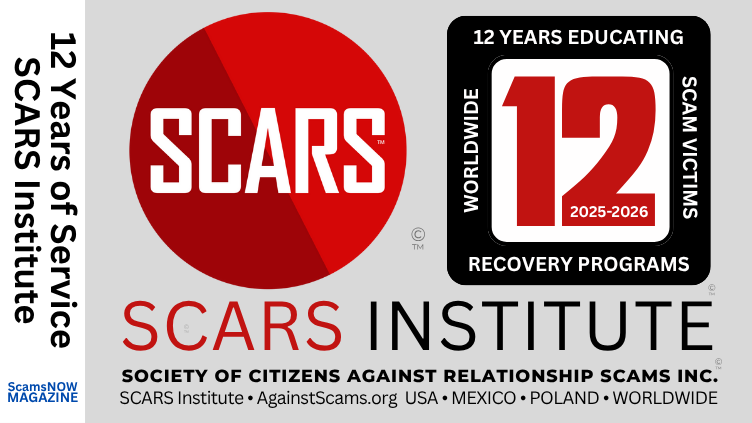

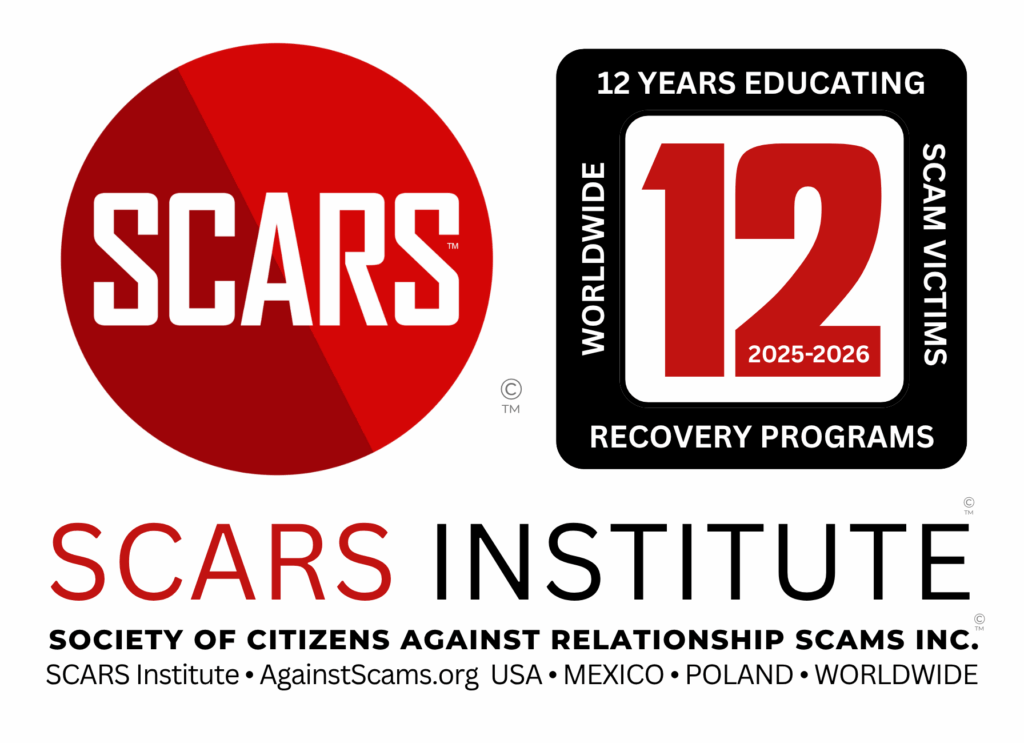


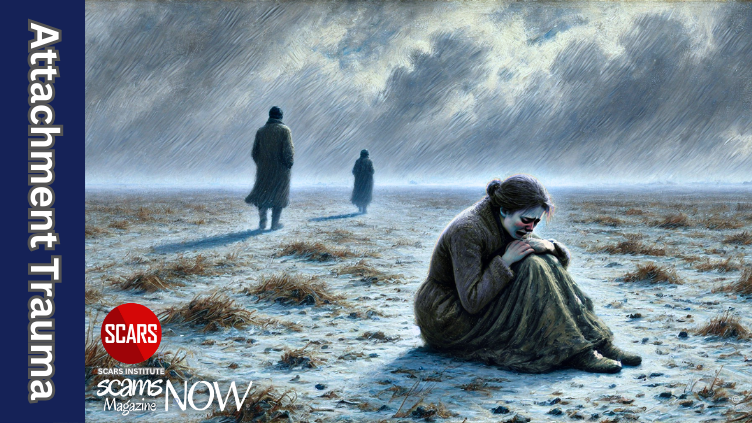







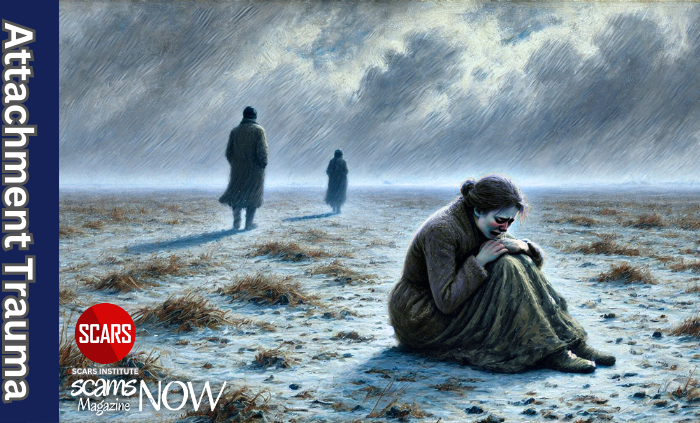
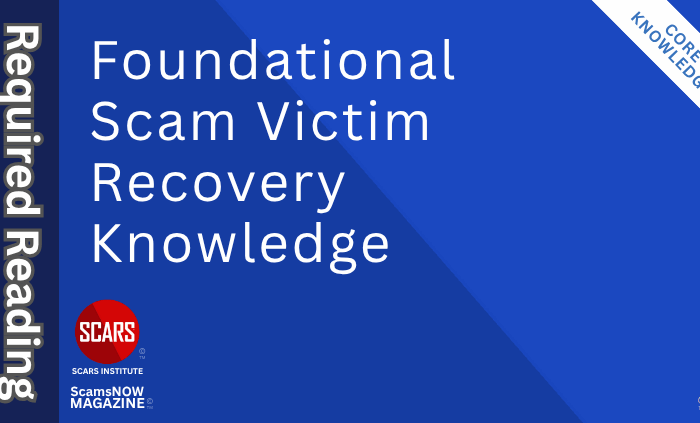


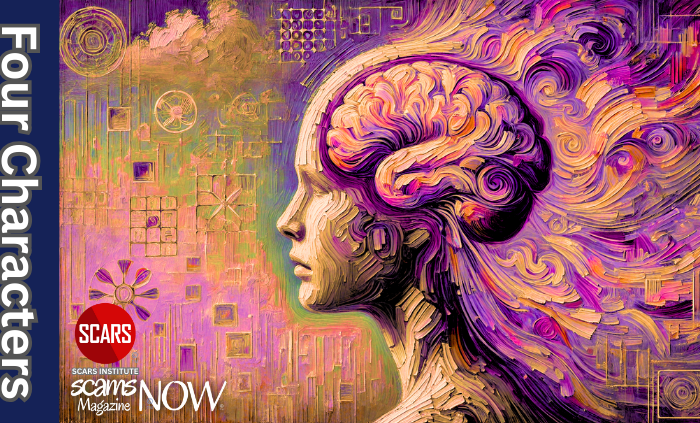
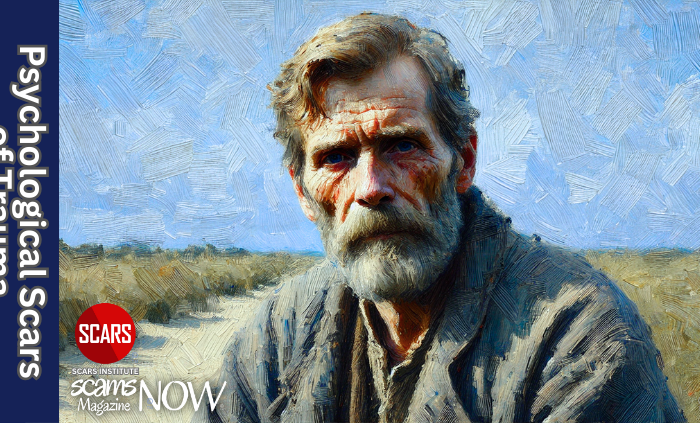



![scars-institute[1] Quantum Mechanics of Relationship Scams - A Metaphor - 2025](https://scamsnow.com/wp-content/uploads/2025/04/scars-institute1.png)
![niprc1.png1_-150×1501-1[1] Quantum Mechanics of Relationship Scams - A Metaphor - 2025](https://scamsnow.com/wp-content/uploads/2025/04/niprc1.png1_-150x1501-11.webp)
